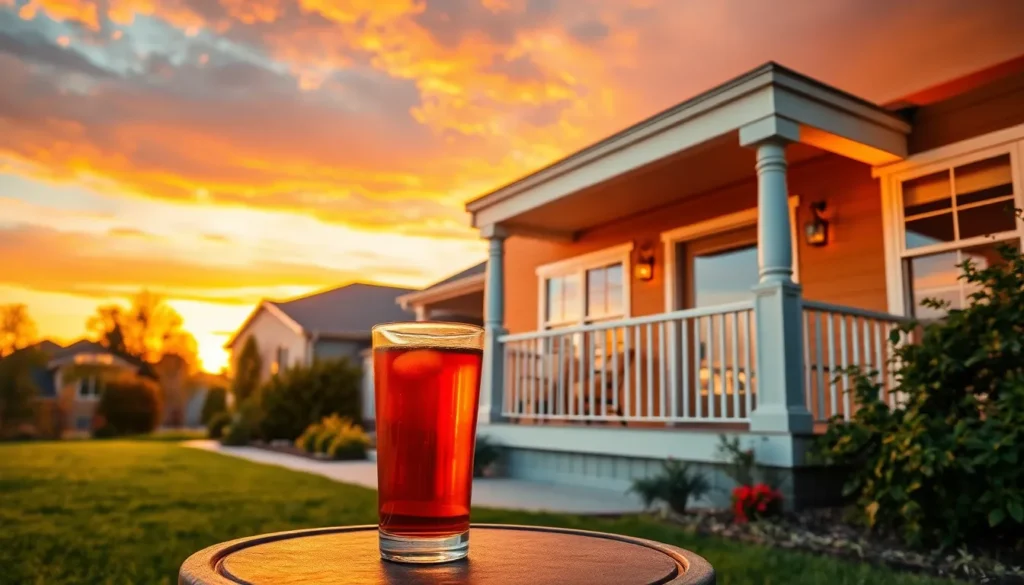Table of Contents
ToggleChoosing the right paint color for a home can feel like an Olympic event. With so many shades and hues, it’s easy to get lost in a sea of swatches. But fear not! The perfect color isn’t just a dream; it’s waiting to transform those drab walls into a vibrant masterpiece.
Popular Home Paint Colors
Choosing the right paint color can elevate the beauty of any home. Here are some popular options that cater to various tastes.
Neutral Shades
Neutral shades, such as beige, gray, and white, create a timeless backdrop for any space. These versatile colors blend seamlessly with a range of decor styles and furnishings. Beige provides warmth, while cool grays add a modern touch. Crisp whites illuminate small rooms, making them feel larger and airier. Many homeowners gravitate towards these shades for their calming effect, enhancing ambiance and making spaces more inviting.
Bold and Vibrant Colors
Bold and vibrant colors, including deep blues, bright reds, and rich greens, add character and personality to interiors. These hues can make a striking statement in living rooms or dining areas. Dark blues evoke a sense of sophistication while lively reds boost energy in social spaces. Rich greens connect interiors with nature, promoting tranquility. A vibrant accent wall can transform a room, offering visual interest and depth while serving as a focal point in home design.
Choosing the Right Home Paint Colors

Selecting the right paint colors can elevate a home’s aesthetics. It’s crucial to understand different factors that influence color choices.
Understanding Color Psychology
Color choices evoke emotions and set the mood. Neutral shades promote tranquility while blues inspire calmness. Warm colors, like reds and yellows, generate energy and warmth. Bold hues can create focal points or highlight architectural features. Choosing a color aligned with the desired atmosphere enhances the overall experience of a space. It’s important to consider the feelings each color imparts, allowing for a harmonious environment.
Considering Lighting and Space
Lighting plays a vital role in color perception. Natural and artificial lights can alter how colors appear. Bright spaces may wash out lighter shades while darker areas can emphasize deep hues. It’s essential to test paint samples in different lighting conditions to observe changes throughout the day. Room size and layout also impact color selection. Light colors can make small spaces feel larger, while darker colors can create a cozy, intimate atmosphere. Balancing these elements leads to a well-designed home.
Trends in Home Paint Colors
Current trends in home paint colors reflect a blend of creativity and comfort. Homeowners increasingly explore unique palettes that express personal style while enhancing living spaces.
Trending Color Palettes
Neutral colors maintain popularity, providing a versatile backdrop for decor. Soft beiges, airy grays, and crisp whites create inviting atmospheres. Earthy tones, including terracotta and olive green, are gaining traction, establishing a connection to nature. Jewel tones like emerald green and sapphire blue add sophistication and depth to interiors. Vibrant colors, such as coral and mustard yellow, inject energy without overwhelming a space. Combining these hues can create striking contrasts and harmonies.
Seasonal Colors to Consider
Spring invites fresh pastels like mint green and light peach, embodying renewal and warmth. Summer often leans towards bright shades such as sunny yellow and ocean blue, reflecting outdoor vibrancy. As fall approaches, deeper hues like burnt orange and maroon evoke cozy feelings and seasonal nostalgia. Winter brings a return to rich colors, including deep navy and warm gold, creating elegant and festive environments. Selecting colors that resonate with the changing seasons can refresh a home’s ambiance throughout the year.
DIY Painting Tips
DIY painting projects can transform a home. Following a few strategic tips ensures a smooth and successful experience.
Preparing Your Space
Clutter-free areas make for easier painting. Move furniture away from walls to prevent accidental paint splatters. Cover floors with drop cloths or old sheets to protect them from spills. Use painter’s tape along edges of trim, windows, and doors for crisp lines. Clean walls to remove dust and grime, which helps paint adhere properly. Ventilate the space by opening windows or turning on fans, ensuring fresh air flows through the area. Create a well-lit workspace, as good lighting helps identify any missed spots.
Application Techniques
Use the right tools for the job to achieve professional results. Brushes are best for cutting in around edges, while rollers efficiently cover larger areas. Pour paint into a tray for easy access and even application. Start from the top of the wall and work downward, catching drips as you go. Apply paint in thin coats to avoid drips and ensure even coverage. Allow sufficient drying time between coats, which prevents peeling and enhances durability. Stand back regularly to check your work, making adjustments as needed for an even finish.
Choosing the right home paint colors can transform a space and reflect personal style. With a blend of neutral shades and bold hues homeowners can create environments that evoke desired emotions and set the right mood. Understanding the impact of color psychology and lighting is crucial for making informed decisions.
As trends evolve homeowners are encouraged to explore unique palettes that resonate with their tastes while considering seasonal inspirations. By following effective DIY tips and techniques they can ensure a successful painting project. Ultimately the perfect color choice not only enhances aesthetics but also enriches the overall living experience.










